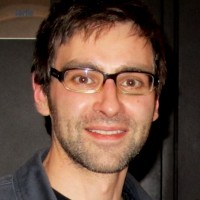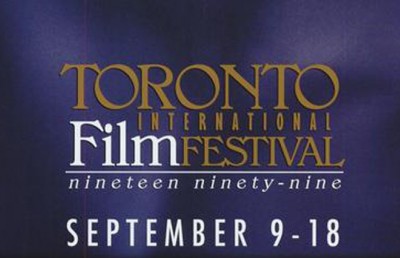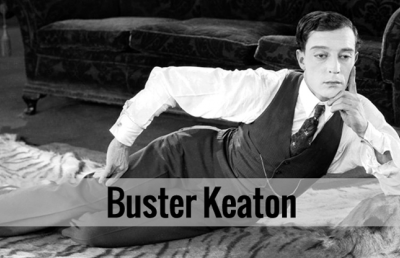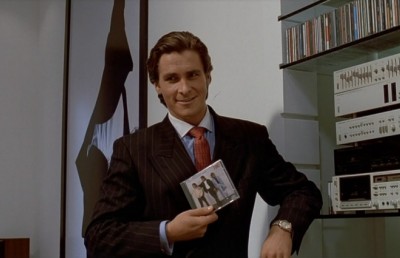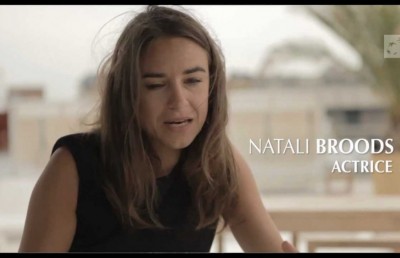Donigan Cumming: Continuity and Rupture
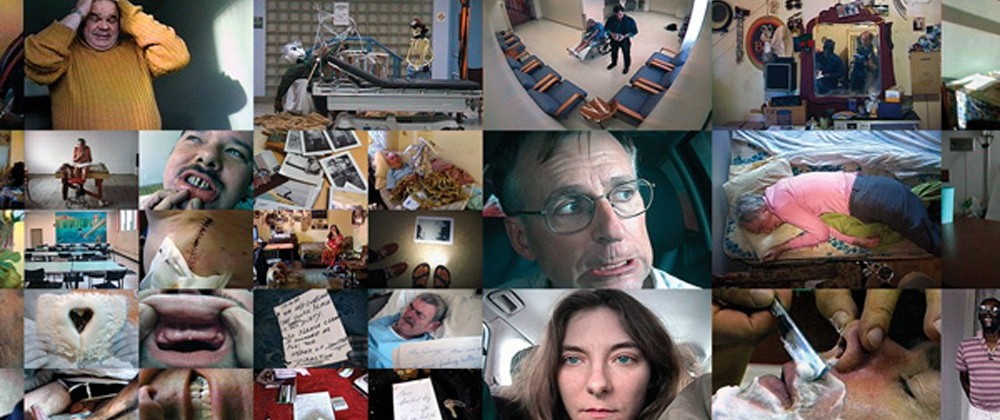
[Text of the lecture given by Donigan Cumming as part of the French tour Donigan Cumming : Continuity and Rupture, a series of video screenings organized by le Centre culturel canadien and Transat Vidéo, shown in Paris, Hérouville Saint-Clair, Strasbourg and Marseille, from October 25th to November 2nd 1999.]
2000, april 30
To present my videos, I thought that I would focus my remarks on two conditions of my work, on the notions of ‘continuity’ and ‘rupture.’ These notions are basic to contemporary art – to communication of any sort. What I want to draw to your attention is a matter of degree. The work is designed to insist on the co-presence of ‘continuity’ and ‘rupture’ as a persuasive construction of reality.
I have used photographs, sound, text, and video in my work. What binds these elements is an attachment to external reality – the work records and documents. All the work that I do is set loosely within the framework of social documentary – work that interprets social attitudes and individual response. Within the category of social documentary, I include every aspect of the work – its whole affective life, including its production and its reception – questions of critical and popular reaction, professional ethics, narrative devices, symbology, rhetoric, myth, and so on. The continuity in my work is to raise questions about documentary practice – to challenge assumptions – even as I present the realities of social conditions. In short, the work comments, often very critically, on the documentary tradition that feeds and houses it. Its overt artificiality and lack of orthodoxy are the first signs of rupture – fiction infiltrating the house of truth, and vice versa.
The issues that I began to raise in Reality and Motive in Documentary Photography – a large body of work first shown at the Centre national de la photographie in 1986 are still with me today, as are the people who posed for them. The living and the dead.
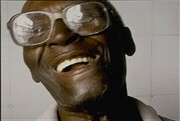
Cut the Parrot
I have been positively inspired by the revolution in ethnographic film that acknowledged the participation and the inevitable effect of the filmmaker’s presence. The documentary photographer’s presence is felt frame by frame, but also in a larger, long-term affect which has serious ramifications. My photographs and tapes are made in an improvised community of migratory figures. These people did not form any kind of cohesive community before they were recruited to pose as types in what I saw as a fictional documentary work. But the nature of photography determines its share of reality; a community had been formed and I have continued to know and work with its members ever since.
When I say that the community is migratory, I mean several things at once. Some of the people I work with in fact belong to the working class or socially-assisted poor. Of that disparate group, the ones who are well and mobile move around quite a bit; housing is a constant subject of conversation. If rooms figure so importantly in my work, it’s partly a reflection of the subjects’ own interests; the rooms, however, may not be their own. For more affluent members of society, accident, illness, or aging brings a process of external assessment that steals their remaining options, the power to run their own lives and maintain themselves at home.
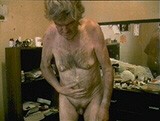
Erratic Angel
Aging and illness steal less tangible things as well. Someone once suggested that my work breaks the polite rule against staring. Of course, staring is fine when it is constituted as the intimate familial look, and the object of the gaze is whole and well. We are supposed to stop staring – to withdraw the look – when the person we have always stared at loses his or her powers, becomes disfigured, or is masked by some medical apparatus. Where does our gaze go then? In the sickroom of a parent or the apartment of an aging widower, it begins to drift away. My photographs stare. My video work accommodates the feeling of staring – the blurring vision that says, I’ve seen enough – but it insists on returning to the subject. I’ve been looking these people in the face for 17 years and I intend to keep doing it.
Besides moving up or down the economic scale, or in and out of polite looks, another kind of mobility is created by this community of untrained actors, through story-telling and role-playing. I use a lot of theatrical metaphors when I make and talk about my work. I’m not interested in spectacle for its own sake, but there are certain aspects of the theatrical experience that are crucial to what I do. This is basic social theory, but it’s also a function of my training and early influences. I have a kind of mixed background coming out of the legitimate theatre – meaning Beckett, Artaud, Brecht and Ionesco – and moving through the Performance Art of the late sixties when Fluxus and Funk were also in the air.
My movement from still photography to video has surprised a few people, but actually I made my first film in 1968, in collaboration with Robert Forsyth. It was an 8-minute film with a 2 ½ hour soundtrack called Tennessee Street. The soundtrack began with a reading from Calvin Tomkins’s The Bride and the Bachelors, then we proceeded down the commercial strip in my van, stopping to talk to people, buy doughnuts – the whole trip took about three hours. We were very much against editing so the film ran on a loop for the duration of the soundtrack. Bob and I took it out on a brief tour. The last stop was in Columbus, Georgia, where the film was not well received. It took me twenty years to make another one.
Despite that early rebuff, I continue to borrow the tools of popular culture. I want to cultivate involvement on the part of the spectator – even if it comes in waves of disapproval or rejection. I read somewhere that the book that you decide to stop reading may influence you more than the one you finish. I hold that in my mind when people walk out of my tapes. I want to be provocative; I think I have to be. My work goes out to people who have a great, if sometimes unconscious, involvement in theatrical events, from television soap operas to politics. They are used to spectacle and their world is noisy. I am noisy too.
In content and theory, my work addresses issues of categorical confusion and transgression. Photography was the first basic tool in my work. I like its realistic qualities, the detail, the fact that it appears to be describing a situation accurately or more truthfully than other media. I like what the photograph does and also what it stands for – how it can be used in relation to other media. From the beginning, I’ve used sound to undermine the realism of the photographs. In photographic installations, a soundtrack, obsessively repeated, confronted the purity of the image. The idea was to prod the viewer into a parallel confrontation with my documentary fiction. In recent multi-media installations, repetition takes the form of reenactments and rhythmic loops. My photographic style translates to video in long, unbroken takes and off-screen discussions that undermine the documentary form. I see a grain of truth in all this: discordant photographic and videographic techniques simulate the pressures on people’s lives. Systematic tensions maintain a condition that goes beyond the absurd – beyond its negativity – as an interdisciplinary theatre of chaos – a productive condition. What I seek from the integration of media is a level of disintegration that pierces the unity of any one medium and emulates the disorder of the site. Sound, which operates inside and outside the body, is especially effective in this way. I like sentimental songs about love, God, and country. I like the sound of television in the background of scenes because it seems so real to me as a continuous feed of fantasy into the worlds that I photograph and tape.
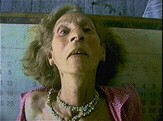
A Prayer for Nettie
I have referred to the world that I photograph by various terms: an imagined community, an arena, a theatre – these are very open concepts because I want the working space to accommodate a great many people and enterprises. My own enterprise is of course at the centre. The work that I do is intensely personal, based on life’s lessons. The story that I tell at the end of Cut the Parrot is true. My older brother, Julien, is mentally retarded. Growing up with Julien – with the paradoxes of his life – has been very influential. I am always thinking about Julien and the people that he has introduced me to. They have led me to other people whose views and experiences are very different from my own. I don’t represent their views and I don’t pretend to – I represent my own, looking at people who are looking back at me. I work with people who display certain qualities that I want to bring together in a single work. Some of them work with me for the pleasures of performing. Some do it strictly for the fee. Others, like Nettie Harris, want to work, but they also want to send a message to society. Hers was about being an elderly woman. Nettie understood the impact of what she was doing on other elderly women of her social group and she was prepared to risk criticism. Other people that I work with have messages of rebelliousness, non-conformity, anger and spirituality. We incorporate their messages into the work.
The tenor of my work has followed my growth as a person. I used to be a lot more angry. Reality and Motive was a kind of revenge piece on what was then called Concerned Photography – the critique was ostensibly pointed at my photographic colleagues, but also aimed at the complacency of audiences. My work has since become less didactic, more personal. I no longer care to anticipate or sum up other people’s feelings. What I want to do now is create a public space where people can have a productive experience.
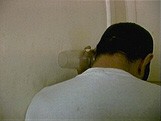
After Brenda
When I explain my projects, I can link them together as part of a grand scheme. A Prayer for Nettie was the bridge from my photographic work to my video work. It was an elegy for my dead model. Cut The Parrot followed logically as an extension of my relationship with Albert, Nettie’s chief mourner. But in fact, Albert barely knew Nettie. Others in A Prayer for Nettie did not know her at all. One man is crying and grieving, yes, but not for Nettie, for his wife. Cut the Parrot was supposed to be a comedy, but Albert died, so it became a wake. In After Brenda, we have a case of obsessive longing, Pierre’s for Brenda, a woman he loved and abused. But the essential obsession, the trigger of the tape, was mine for a male actor who had promised to work with me, then disappeared. While I was after Gerry, I stumbled into Pierre who was after Brenda and I poured his obsession into mine. Against the melodrama of Pierre’s heartbreak, I pitted a much cooler story of addiction, homelessness, and accidental death told by an unidentified narrator. In Erratic Angel, that story was expanded into the life history of Colin, a man of my generation who was not as lucky as me.
So it goes. My movement from project to project has been quite instinctive. When I started to work seriously with Nettie Harris, it was a case of looking at her, after 6 or 7 years of looking at her, and realizing that she was getting very old, and thinking how involved I was in that process. When I was younger, I thought about the importance of changing gears and doing something new. Now I accept the fact that I am driven by major, unresolved questions that I answer differently at different stages of my own life. Oddly enough, that realization seems to have encouraged more experimentation, not less.
A Prayer For Nettie (1995)

My first tape, A Prayer for Nettie, was a transitional work, originally conceived as part of an installation with photographs and seven monitors. That explains the episodic structure of the tape, though as I worked on it, and on subsequent tapes, I realized that I had stumbled on a very workable facsimile of my world view. The tape is an elegy to Nettie Harris who was my principal model for a photographic project called, Pretty Ribbons. Nettie died in October, 1993. In the summer before she died, I had begun to tape her, essentially continuing our habit of meeting and working together once a week. The tape is about mourning and memory.
Cut the Parrot (1996)

My second tape, Cut the Parrot, was inspired by the last scene in A Prayer for Nettie. Albert Smith and I perform a little skit which breaks the cycle of piety and hope – we do this after we put out the cat. Our successful improvisation gave me the idea of making of a comedy with Albert, and I persisted in that idea even after he died. Cut the Parrot became a tape about Albert’s death, not an elegy, a wake. People tell stories, they joke, they find meaning in the most trivial things. The characters move between Albert living and Albert dead, then they shift to the lives and deaths of their loved ones. They pray, they sing, they tell war stories, and they go on. The wake creates a space of carnivalesque release, making death large and loud and real, within the safety of a fictive narrative. My favourite scene in Cut the Parrot is a dialogue with Susan in which she turns the tables on me.
After Brenda (1997)

After Brenda is the story of man called Pierre. He is in difficult circumstances – he is homeless, he’s been thrown in jail for kidnapping and rape, he’s been acquitted, he’s still obsessed – in love – with the woman he accuses of causing all his troubles, Brenda, whom we meet finally in Pierre’s temporary apartment. In terms of genre, I classify this tape as a romance. The amateur actors, some of whom have worked with me since the early eighties, play versions of their own lives in settings of their own creation – their rooms, their urban landscapes. If these aspects of the tapes are true, so is my claim to fiction. In Pierre’s obsession with Brenda, he fantasizes that she is sleeping around. He accuses the elderly man, Nelson, of sleeping with Brenda right in front of him. This is a very ordinary, very human blend of fact and fiction. These plot twists are the performances of Pierre’s life.
Erratic Angel (1998)

Erratic Angel is a documentary. The central figure is a man named Colin Kane. Colin is my age; our backgrounds are similar; we shared many of the same experiences, in parallel lives, and sometimes together. At some point, our lives took different turns, and Colin’s went downhill into alcohol and drugs. I decided to make a tape about Colin, a tape that ended up talking a lot about recovery programmes and the day-to-day life of a middle-aged man who has spent most of his adult life drinking. Colin’s situation is not that unusual, but he is a very articulate informant. He took the idea of a film very seriously, as a form of art-therapy, part of his recovery, and as a performance. He is brutally honest and highly critical of the medical system. At the same time, you can see, even as he rants, that he sometimes slips out of character, out of his onstage role as a documentary subject. That ‘slip’ is the kind of rupture that traditional documentary film making tends to suppress.
Karaoke (1998)

Karaoke is a very short tape, just over three minutes. It is part of a new series that I am working on, more photographic than cinematic, called Moving Stills.
Distribution : Donigan Cumming

